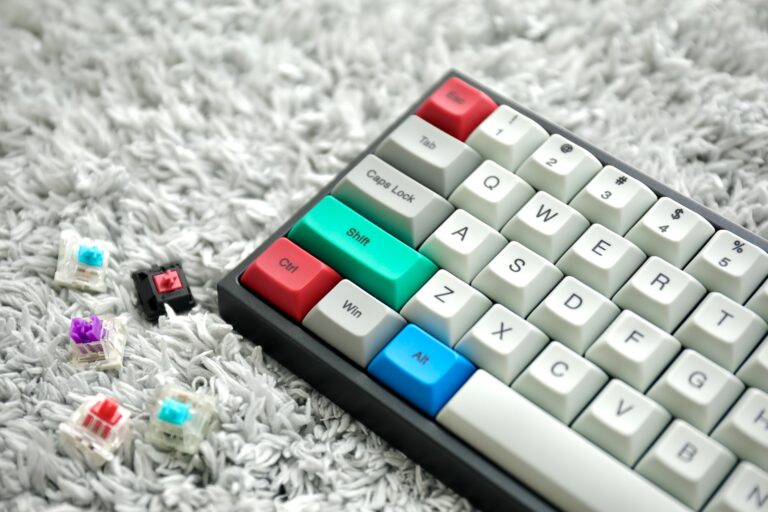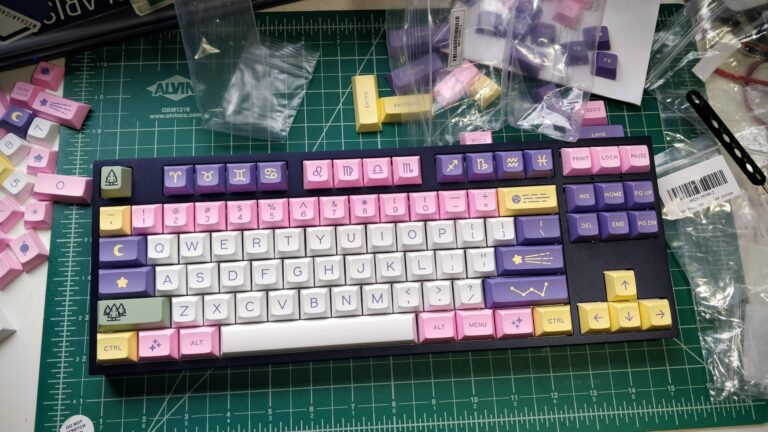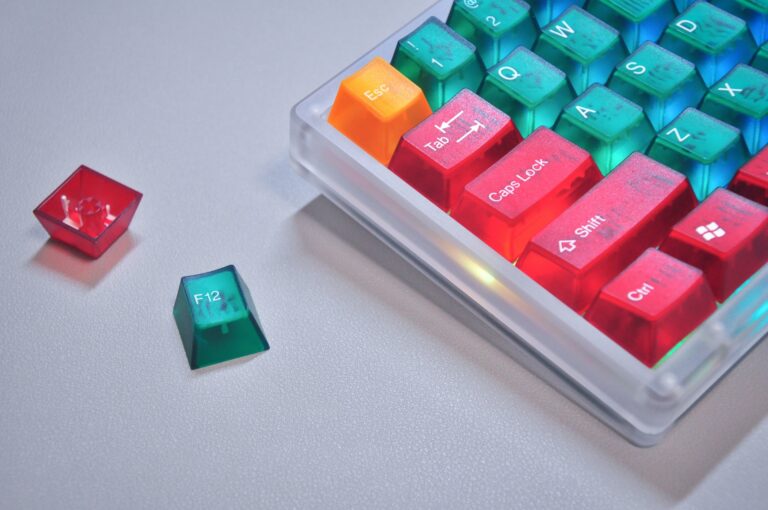In this article, we will explore the world of mechanical keyboard typing sound profiles, taking you on a journey from the clicky and tactile switches to the silent and linear ones. We’ll dive deep into the science behind these sounds, explaining how they are produced and the factors that contribute to their variations. Not only will you gain a better understanding of the different sound profiles, but you’ll also be able to make an informed decision when it comes to choosing the perfect keyboard for your needs. So, let’s embark on this sonic adventure and discover the fascinating world of mechanical keyboard typing sound profiles!
The Importance of Choosing the Right Typing Sound Profile
When it comes to mechanical keyboards, the typing sound profile may not be the first thing that comes to mind. Most people focus on factors like key layout, keycap material, or wireless connectivity.
However, the typing sound profile can have a significant impact on your overall typing experience. It affects not only the sound you hear but also the tactile feedback you feel with each keystroke. The right sound profile can make typing a pleasure, while the wrong one can be distracting or even annoying. Therefore, it’s important to understand the different keyboard typing sound profiles and choose the one that best suits your needs and preferences.
Note: Some of the links here are affiliate links. There’s NO additional cost for you, but it does help our team to earn some coffee money to keep us and you typing.

Clicky Keyboards
Clicky keyboards are known for their distinct, audible click sound when keys are pressed. This sound is produced by a mechanism called the “click jacket” or “click leaf” inside the switch. When the key is pressed, the click leaf snaps down, creating a sharp and satisfying click sound. The clicky sound not only provides auditory feedback but also enhances the tactile feedback, making it easier to determine if the keypress has registered. This can be particularly beneficial for touch typists who rely on muscle memory.
Pros
Clicky keyboards have several advantages. Firstly, the audible click provides a satisfying typing experience, giving a sense of tactile confirmation with each keypress. Secondly, the sound can be helpful for improving typing accuracy, as it allows you to hear if a keypress has been missed or if multiple keys were pressed unintentionally. Thirdly, the clicky sound can be quite enjoyable, adding a nostalgic and mechanical feel to your typing sessions.
Cons
Clicky keyboards also have their downsides. The most obvious drawback is the noise they produce. The clicky sound can be disruptive in quiet environments and may annoy colleagues, roommates, or family members. Additionally, the click mechanism tends to require more force to actuate the key, which may lead to finger fatigue over extended typing sessions.

Silent Keyboards
If you prefer a quieter typing experience, silent keyboards may be the perfect fit for you. Silent keyboards use a different type of switch mechanism that aims to minimize or eliminate the audible click sound. Instead of employing a click jacket, silent switches use dampeners or rubber o-rings to reduce the noise produced during keypresses. These dampeners absorb the impact of the key hitting the bottom of the switch, resulting in a softer and more muted sound. Silent keyboards are designed to provide the tactile feedback without the audible distraction.
Pros
Silent keyboards offer several advantages. The most obvious one is the reduced noise level compared to clicky keyboards. This makes silent keyboards ideal for shared workspaces, offices, or late-night typing sessions where silence is essential. Additionally, the absence of the loud click sound allows for a more focused and undisturbed working environment. Silent keyboards are also beneficial for streamers or content creators who want to minimize background noise during recordings.
Cons
Silent keyboards may not provide the same level of tactile feedback as clicky keyboards. The dampening mechanisms used to reduce the noise can also affect the tactile experience, making it less pronounced. Some users may find this lack of feedback unsatisfying, especially if they rely on the physical response while typing.

Tactile Keyboards
Tactile keyboards offer a balance between clicky and silent keyboards. They provide a tactile bump or feedback when a key is actuated, without the loud click sound. Tactile switches have a small bump in the middle of the switch mechanism that you can feel as you press down on the key. This bump provides a physical confirmation that the keypress has been registered, without the need for an audible click. The tactile feedback can be subtle or more pronounced, depending on the specific switch design.
Pros
Tactile keyboards have several advantages. Firstly, they provide the tactile feedback that many typists find satisfying and necessary for accurate typing. The bump in the switch mechanism helps you know exactly when the keypress has been registered, improving typing accuracy and reducing errors. Secondly, while not completely silent, tactile keyboards are generally quieter than clicky keyboards, making them suitable for quieter environments. The absence of the loud click sound can be less distracting and more pleasant for those around you. Lastly, tactile keyboards are often more forgiving on the fingers compared to clicky switches, as they typically require less force to actuate the keys.
Cons
Tactile keyboards may not be suitable for everyone. Some users may find the tactile bump distracting or unnecessary, preferring a smoother and more linear typing experience. Additionally, the level of tactile feedback can vary between different switch models and brands, so it’s important to test and find the one that suits your preferences.
Factors to Consider
- Environment: If you work in an open office or share a space with others, a silent or tactile keyboard may be the best option to avoid disturbing your colleagues. If you work in a private office or have a dedicated workspace at home, you may have more flexibility in choosing a clicky keyboard if that’s your preference.
- Personal Typing Style: Some typists enjoy the audible feedback and tactile response provided by clicky keyboards, while others may find it distracting or unnecessary. It’s important to consider what type of feedback you find most comfortable and enjoyable.
- Keyboard Use: If you’re a writer or a programmer who spends long hours typing, you may want to prioritize comfort and minimize finger fatigue. In contrast, if you’re a gamer who values quick and precise input, you may prefer a clicky or tactile keyboard for the enhanced feedback.
The Bottom Line
In conclusion, understanding the different keyboard typing sound profiles is crucial for optimizing your typing experience and productivity. Test and experience different sound profiles in person whenever possible and read reviews to make an informed decision. By choosing the right keyboard typing sound profile, you can enhance your typing experience, minimize distractions, and maximize your productivity.










